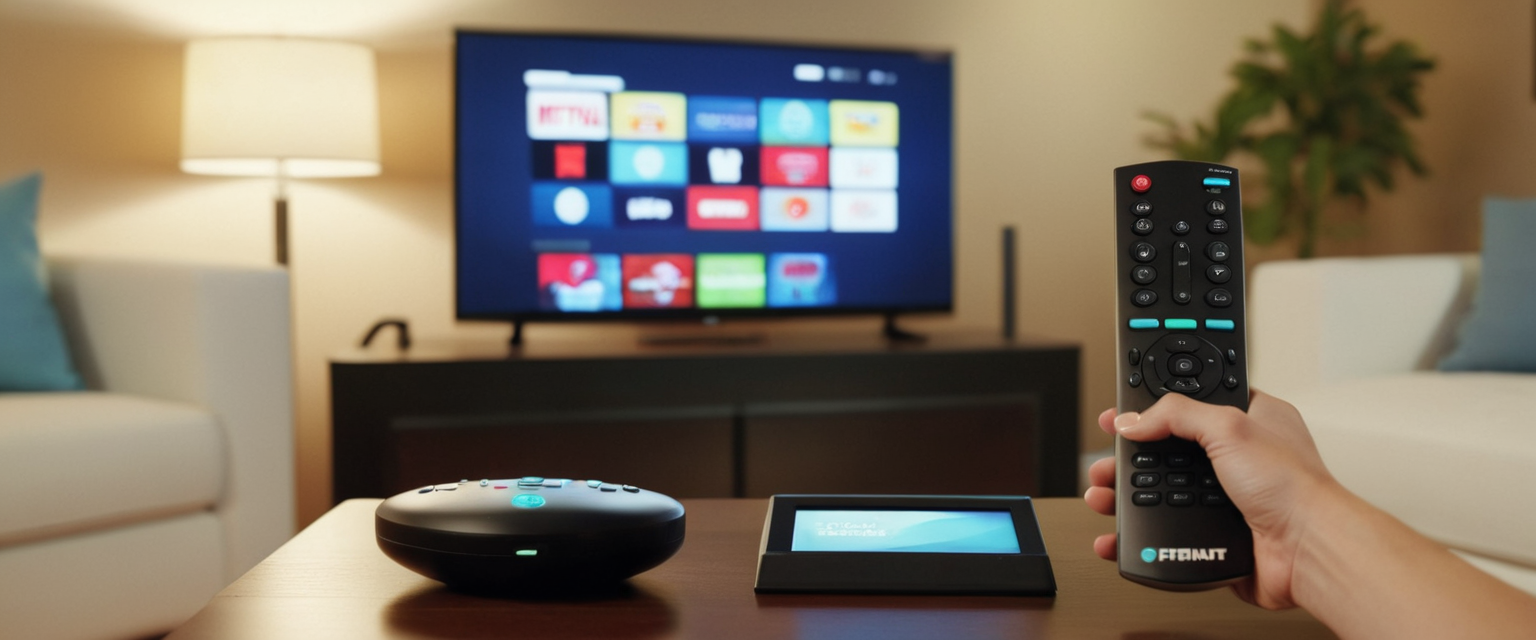
Using a Virtual Private Network with Netflix involves connecting to a VPN service before accessing the streaming platform, which masks your IP address and makes Netflix believe you are located in a different country, thereby granting access to region-specific content libraries that would otherwise be unavailable in your actual location. The process requires selecting a reputable VPN provider that consistently bypasses Netflix’s sophisticated detection systems, downloading and installing the appropriate application for your device, connecting to a server in the desired country, and then launching Netflix to access the corresponding regional library. However, the relationship between VPNs and Netflix exists within a complex technological arms race where Netflix continuously develops new detection methods while premium VPN providers like NordVPN, Surfshark, and ExpressVPN invest heavily in obfuscation technologies and dedicated streaming servers to maintain access, making the success of this approach dependent on both the VPN’s capabilities and Netflix’s ever-evolving blocking strategies. This comprehensive report examines the technical foundations of VPN technology, the specific mechanisms through which Netflix detects and blocks VPN connections, practical implementation strategies across multiple devices, recommendations for effective VPN services, troubleshooting approaches, legal considerations, and the broader advantages and limitations users should understand before attempting to circumvent geographic restrictions on streaming services.
Understanding Virtual Private Networks and Their Technical Architecture
Virtual Private Networks represent a foundational privacy and security technology that operates by creating an encrypted “tunnel” between a user’s device and a remote server, thereby routing all internet traffic through the VPN provider’s infrastructure and masking the user’s actual IP address. Originally developed for enterprise security purposes to enable secure communication between distributed organizational networks, VPNs rapidly evolved into consumer-facing products following widespread internet adoption. From the perspective of an external observer, a VPN user’s traffic appears to originate from the VPN server rather than from the user’s actual device or location, which is the fundamental principle that allows VPN users to appear as though they are accessing the internet from different geographic locations. VPN providers implement this functionality through various encryption methods and protocols, including OpenVPN, Layer 2 Tunneling Protocol, Internet Protocol Security, and proprietary innovations like NordVPN’s NordLynx and ExpressVPN’s Lightway protocol. These encryption protocols employ high-grade cryptographic standards such as AES-256 encryption, which represents the current industry benchmark for data security.
Research into consumer VPN adoption patterns reveals that different user populations employ VPNs for distinct purposes and demonstrate varying levels of trust in different VPN types. Academic studies examining 729 U.S. VPN users across multiple demographic segments found that general population users primarily prioritize security and privacy protection and tend to utilize VPNs on a continuous basis, whereas younger demographic cohorts, particularly university students, demonstrate greater interest in using VPNs to access geographically restricted content and employ VPNs more episodically. Additionally, research indicates that users feel substantially safer using institutional VPNs provided by universities or employers compared to free commercial VPN services, and they demonstrate increased confidence in paid commercial VPNs relative to free alternatives, suggesting significant awareness among users regarding security risks associated with free VPN services. This differentiation in VPN usage motivations and trust profiles directly relates to Netflix access, as streaming represents one of the primary consumer use cases for commercial VPN adoption alongside general privacy protection.
Why Netflix Actively Blocks VPN Usage and Geographic Restrictions Exist
Netflix implements sophisticated VPN detection and blocking technologies for several interrelated reasons rooted in its contractual obligations and business model. The streaming platform’s content library comprises both original productions developed directly by Netflix and licensed content acquired from studios, networks, and independent producers through negotiated agreements. These licensing agreements typically contain strict geographic restrictions, specifying which countries Netflix may legally distribute each title and establishing contractual obligations to enforce these territorial limitations. When Netflix fails to enforce these geographic restrictions and allows users to access content outside licensed territories, the company potentially violates contractual terms with copyright holders, exposing itself to legal liability and financial penalties. Content creators and copyright holders maintain strong incentives to enforce geographic distribution restrictions because regional licensing enables price discrimination—allowing content distributors to charge different prices in different markets based on local economic conditions and market demand. Furthermore, studios and networks actively monitor content distribution patterns and can penalize Netflix for geographic violations, creating powerful institutional pressure for strict enforcement.
Netflix’s aggressive stance on VPN blocking intensified following the company’s expansion into content production, as Netflix originals generate significant revenue streams that depend partly on maintaining the perceived value of regional content exclusivity. Additionally, Netflix’s introduction of ad-supported subscription tiers created new complications for VPN usage, as advertisers specifically purchase access to geographically targeted audiences in particular markets, and VPNs fundamentally disrupt this geographic targeting model. Consequently, Netflix officially prohibits VPN use on its ad-supported plans and maintains stricter detection protocols for these subscription tiers. The company further restricts VPN access due to the difficulty such access creates for enforcing Netflix’s password-sharing restrictions and account location verification procedures. Netflix estimates household membership based partly on consistent IP address patterns and geographic location consistency; VPNs obscure both metrics, making it substantially more difficult to distinguish between legitimate password sharing among household members and policy-violating sharing across geographic regions. When Netflix determines that an account is accessing the service from multiple divergent geographic locations simultaneously via VPN, the company cannot reliably determine whether the account represents multiple household members in different locations or a single user attempting to circumvent sharing restrictions.
Practical Step-by-Step Instructions for Using VPNs with Netflix
The process of using a VPN with Netflix involves several sequential steps that must be executed in proper order to maximize the likelihood of successful access to desired regional content libraries. The first step requires selecting an appropriate VPN provider that has demonstrated reliable capability to bypass Netflix’s detection systems, with leading options including NordVPN, Surfshark, ExpressVPN, and IPVanish based on extensive testing and independent verification of their Netflix compatibility. Following VPN selection, the user must navigate to the chosen VPN provider’s website, create an account with credentials, and select an appropriate subscription plan—noting that most premium VPN services offer long-term plans at substantially reduced monthly rates, with options typically ranging from monthly-only subscriptions to multi-year commitments. Once account creation is complete, the user downloads the VPN application appropriate for their specific device, whether that involves Windows or macOS desktop applications, iOS or Android mobile applications, or in some cases, manual configuration on routers or media streaming devices.
After downloading and installing the VPN application, the user launches the application, logs in using the account credentials created during registration, and navigates to the VPN server selection interface. This step proves critical because the user must select a server located in the country whose Netflix library they wish to access—for example, selecting a United States-based server to access the American Netflix library or a United Kingdom-based server to access British content. Most leading VPN providers maintain extensive server networks across dozens or hundreds of countries, and many label specific servers as optimized or dedicated for streaming to assist users in identifying the most reliable options. Once the desired server location is selected, the user initiates the VPN connection by clicking a “Connect” button or similar interface element, and most modern VPN applications display connection status and confirm when the secure tunnel has been successfully established. The VPN application simultaneously assigns the user an IP address associated with the selected server location, effectively replacing their actual IP address with the VPN server’s IP address in Netflix’s detection systems.
With the VPN connection active and confirmed, the user then opens the Netflix application or navigates to netflix.com through their web browser. Netflix’s servers detect the VPN IP address and route the user to the Netflix interface corresponding to the country associated with that IP address—so a user connected to a United States VPN server will see the American Netflix interface and have access to the American Netflix content library. The user logs into their existing Netflix account using their standard credentials, and once authenticated, they can browse and stream content from the regional library corresponding to their VPN server location. However, if the user encounters a proxy error message—typically displayed as error code M7111-5059 with text stating “You seem to be using an unblocker or proxy”—this indicates that Netflix has detected the VPN connection and blocked access to the requested content. In such situations, the user should attempt to switch to a different VPN server within the same country or try servers in nearby countries, as different IP addresses may not have been flagged by Netflix’s detection systems.
Premium VPN Services with Demonstrated Netflix Compatibility
Among the many VPN services available in the commercial market, a select group of premium providers has invested substantially in bypassing Netflix’s blocking systems and maintains relatively consistent access to multiple Netflix regional libraries. NordVPN stands foremost among these options, having achieved top rankings across independent testing organizations and maintaining compatibility with Netflix across multiple regional libraries. NordVPN operates more than 7,000 servers distributed across 118 countries, providing extensive geographic coverage and numerous alternative server options if one connection point becomes blocked. The service employs a proprietary protocol called NordLynx, which builds upon the WireGuard protocol and integrates additional privacy protections, while also supporting OpenVPN and IKEv2 protocols for users requiring alternative options. NordVPN maintains a strict no-logs policy that has been independently audited by reputable third-party security firms, meaning the company does not store records of user browsing activity, IP addresses, or connection timestamps. The service provides 24/7 customer support via live chat, includes a 30-day money-back guarantee allowing risk-free trial periods, and offers attractive long-term pricing starting from approximately $3.59 per month on two-year plans.
Surfshark represents an alternative premium option that has demonstrated particularly strong performance on Netflix and offers several distinctive advantages including unlimited simultaneous device connections, which proves especially valuable for households with multiple family members wanting to stream simultaneously. Surfshark operates over 3,200 servers across 100 countries and employs the WireGuard protocol as its default, which provides exceptionally fast speeds while maintaining robust security—in testing, Surfshark servers achieved download speeds exceeding 750 Mbps while connected to distant international servers. The service implements multiple obfuscation technologies including its proprietary “NoBorders” feature, which automatically detects restrictive network conditions and adjusts VPN settings to maintain connectivity even in regions with aggressive VPN blocking. Surfshark also maintains a strict no-logs policy, provides 24/7 live chat support, includes a 30-day money-back guarantee, and offers competitive pricing starting from approximately $1.99 per month on two-year plans, making it one of the most affordable premium VPN services available.
ExpressVPN maintains strong Netflix compatibility and provides distinctive advantages including custom router hardware pre-installed with VPN software, MediaStreamer DNS service for devices that cannot install VPN applications, and exceptional customer support. The service maintains servers in 105 countries and employs a proprietary protocol called Lightway that provides both high speeds and robust security characteristics. Independent testing found ExpressVPN achieved download speeds of approximately 420 Mbps on U.S. servers and up to 459 Mbps on European servers, with exceptional upload speed performance. The service provides 24/7 live chat support, includes a 30-day money-back guarantee, implements advanced obfuscation technology called “Lightway Obfuscation,” and offers pricing starting from $8.32 per month on annual plans, though this represents a higher cost than alternative premium options. ExpressVPN distinguishes itself through its superior handling of highly restrictive countries like China and Iran, where its proprietary obfuscation technology maintains more consistent reliability than competing services.
Additional noteworthy premium VPN options include IPVanish, which operates over 2,400 servers across 90 countries and achieved upload speeds exceeding 800 Mbps in independent testing, ProtonVPN, which emphasizes security credentials and maintains 8,000+ servers across 112 countries, and CyberGhost, which provides streaming-optimized servers and beginner-friendly configuration options. IPVanish particularly appeals to users concerned with performance and privacy, maintaining a strict no-logs policy, supporting unlimited simultaneous connections, and providing prices starting from approximately $2.19 per month on annual plans. ProtonVPN emphasizes privacy and security with its Switzerland-based jurisdiction, strong encryption standards, and proven no-logs policy, though it demonstrated more limited Netflix regional library access compared to leading competitors. CyberGhost simplifies the user experience through dedicated Netflix streaming servers that users can identify and select with a single click, making the process more accessible to less technically experienced users.

Comparative Performance Analysis and Speed Characteristics of Leading VPN Services
When evaluating VPN services specifically for Netflix usage, several quantitative metrics provide meaningful performance comparisons that impact the user experience substantially. Speed represents perhaps the most critical metric for streaming applications, as insufficient bandwidth or excessive latency degrades video quality, causes buffering interruptions, and creates frustrating viewing experiences, particularly when attempting to stream content in high-definition or 4K resolution. Independent testing comparing NordVPN, Surfshark, and ExpressVPN revealed that NordVPN achieved average download speeds of 419 Mbps on U.S. servers and retained approximately 84 percent of baseline connection speed, while Surfshark achieved 403 Mbps on U.S. servers and also retained 84 percent of baseline speed. ExpressVPN registered slightly lower download performance at 420 Mbps on U.S. servers but achieved superior upload speeds and retained 87 percent of baseline speed through its proprietary Lightway protocol. On European servers, all three services demonstrated even stronger performance, with Surfshark and NordVPN achieving download speeds exceeding 465 Mbps while ExpressVPN reached 459 Mbps. These speed performance metrics indicate that all leading VPN services maintain sufficient bandwidth for reliable 4K streaming, which requires approximately 25 Mbps, and even high-quality HD streaming at 5 Mbps.
Server network size and geographic distribution significantly influence both speed performance and reliability of Netflix access, as larger server networks provide more redundancy and more alternative connection options when specific servers become blocked. NordVPN operates the largest server network among leading providers with 7,150+ servers across 118 locations, followed closely by Surfshark with 3,200+ servers across 100 countries and ProtonVPN with 8,000+ servers across 112 countries. ExpressVPN operates fewer total servers but provides coverage in 105 countries, and the company maintains that it prioritizes server quality and performance over raw server quantity. The distribution of servers across geographic regions matters substantially for streaming optimization, as servers in or near major population centers typically perform better than those in geographically remote locations. NordVPN’s server network concentrates heavily in North America and Europe where the largest Netflix content libraries reside, while Surfshark distributes its network more evenly across regions.
Simultaneous connection limits—the number of devices that can be protected by a single VPN subscription concurrently—vary significantly among providers and impact household streaming scenarios substantially. Surfshark offers unlimited simultaneous connections across all subscription tiers, enabling entire households to stream simultaneously without connection limits, whereas NordVPN permits 6 simultaneous connections, IPVanish permits unlimited connections, and ExpressVPN permits 8 simultaneous connections. This distinction proves particularly relevant for Netflix households where multiple family members may want to watch different content simultaneously on different devices, as Netflix’s Premium subscription tier permits up to 4 simultaneous streams and most other tiers permit only 1-2 simultaneous streams. When a VPN connection limit is reached and additional devices attempt to connect, users typically receive error messages rather than successful connections, forcing them to disconnect lower-priority devices to establish new connections.
Protect Your Digital Life with Activate Security
Get 14 powerful security tools in one comprehensive suite. VPN, antivirus, password manager, dark web monitoring, and more.
Get Protected NowTechnical Mechanisms Through Which Netflix Detects and Blocks VPN Connections
Netflix employs a sophisticated multi-layered approach to VPN detection that utilizes several complementary technologies working in concert to identify and block users connecting through VPN services. The most straightforward detection mechanism involves maintaining databases of known VPN IP addresses that the streaming platform continuously updates as it identifies new addresses associated with VPN services. When Netflix processes a connection request from a user’s device, the platform’s authentication systems query these VPN IP databases and immediately block any connection originating from a known VPN address, displaying the characteristic proxy error message. This approach proves particularly effective against free VPN services and smaller VPN providers with limited server networks because these services operate small pools of IP addresses that are quickly identified and blacklisted. However, this mechanism has diminishing effectiveness against leading premium VPN providers that operate thousands of servers with tens of thousands of unique IP addresses, as these services can continuously rotate new addresses and redeploy addresses that have been blocked.
Beyond IP address blacklisting, Netflix implements DNS filtering detection that examines Domain Name Server settings associated with connection requests. When a user connects to a VPN, the connection typically routes through the VPN provider’s DNS servers rather than the user’s Internet Service Provider’s DNS servers, creating a mismatch between the user’s IP address location and DNS server location that Netflix can detect and flag as indicative of VPN usage. On mobile devices running iOS or Android, Netflix’s application may override the device’s VPN DNS settings and query the user’s actual ISP DNS server, creating an observable discrepancy between the apparent VPN IP address and the actual DNS resolver location that Netflix interprets as evidence of VPN masquerading. Some VPN services address this detection mechanism by implementing split tunneling configurations where only Netflix traffic routes through the VPN tunnel while DNS queries route through the user’s local network, though this approach creates security vulnerabilities by exposing DNS queries to potential interception.
GPS-based location detection represents an increasingly significant detection mechanism, particularly on mobile devices such as smartphones and tablets that integrate GPS receivers capable of determining the device’s precise geographic location. When a user accesses Netflix from a mobile device while connected to a VPN that claims to provide a U.S. IP address but the device’s GPS receiver indicates the user is physically located in France, this geographic impossibility provides clear evidence of VPN usage. Netflix’s mobile application can access GPS data directly without user consent in many jurisdictions, and the platform compares this GPS-derived location against the IP address location to identify location spoofing attempts. This detection approach effectively eliminates VPN usability on mobile devices for many users, as the GPS receiver automatically exposes their true physical location regardless of the VPN’s IP address masking. Desktop and laptop computers lack GPS receivers in most cases, making this detection mechanism less effective on these platforms, which explains why users frequently report better VPN success on desktop browsers compared to mobile applications.
Netflix additionally implements behavior-based detection that identifies suspicious traffic patterns characteristic of VPN usage. The platform monitors for patterns such as multiple user accounts accessing Netflix simultaneously from identical IP addresses, account logins from geographic locations that would be physically impossible to reach between login timestamps (such as the same account logging in from New York and Los Angeles separated by only minutes), unusual data consumption patterns, and traffic encryption signatures associated with known VPN protocols. When Netflix detects these anomalous patterns, the platform may not immediately block the user but instead restrict the account to accessing only Netflix Original content that carries worldwide distribution rights and does not involve regional licensing complexity. This graduated response approach allows Netflix to avoid false positives that would penalize legitimate users with unusual usage patterns while still degrading the streaming experience sufficiently to discourage VPN usage.
Troubleshooting Approaches When Netflix VPN Connections Fail or Encounter Blocking
When users encounter the proxy error message indicating Netflix has detected and blocked their VPN connection, several troubleshooting approaches provide reasonable probability of restoring access, though the fundamental challenge remains that Netflix continuously deploys new detection methods faster than many VPN services can deploy effective countermeasures. The most straightforward initial troubleshooting step involves switching to a different VPN server, preferably one located within the same country but on different infrastructure or one labeled explicitly as optimized for streaming by the VPN provider. This approach works because Netflix’s IP blacklist remains incomplete despite its scale—the platform has identified and blocked some known VPN IP addresses but has not blocked all of them, meaning users frequently encounter success by simply trying alternative servers. Many leading VPN providers now explicitly label certain servers as “Netflix-optimized” or “Streaming-optimized,” and these designated servers often provide more reliable access because the VPN companies specifically tune these servers for streaming compatibility. If the initial server selection proves unsuccessful, users should systematically attempt different servers in the same country before transitioning to alternative countries’ servers.
When server switching fails to restore access, clearing browser cookies and cached data provides another approach with meaningful success probability, as Netflix stores location data and session information in browser cookies that may enable the platform to maintain awareness of the user’s true geographic location despite the VPN masking. Users should navigate to their browser’s privacy settings, select the option to clear cookies and cached data comprehensively, and then force-quit both the browser and Netflix application before attempting to reconnect with the VPN. For users accessing Netflix through the mobile application rather than the browser, force-quitting the Netflix application entirely, switching to a different VPN server, and then relaunching the Netflix application can reset the application’s network connection and authentication state. Some users report success with restarting their devices entirely, which can clear temporary network configuration data, trigger fresh IP assignment from the VPN server, and potentially update internal VPN routing mechanisms.
Enabling advanced VPN features specifically designed to evade Netflix’s detection represents another troubleshooting approach for premium VPN services that include such functionality. Obfuscated servers—sometimes labeled as “Stealth” mode, “Camouflage” mode, or “NoBorders” mode depending on the VPN provider—disguise VPN traffic to make it resemble regular internet traffic rather than encrypted VPN communications. This obfuscation prevents Netflix from identifying the connection as VPN-based through traffic pattern analysis, though it requires additional processing overhead and typically results in modest speed reductions. Users should enable obfuscation mode in their VPN settings if available, as this can substantially improve access probability despite the speed cost. Similarly, if the VPN service offers dedicated IP addresses as an optional add-on service, users can purchase a dedicated IP address that is used exclusively by that single user rather than shared among thousands of other VPN subscribers. Netflix has greater difficulty blacklisting residential IP addresses or IPs with single-user occupancy, as these addresses appear to Netflix’s detection systems as normal consumer internet connections rather than obvious VPN infrastructure.
When users encounter the error message “You seem to be using a VPN” despite not intentionally connecting to a VPN service, this typically indicates that their Internet Service Provider has assigned them an IP address that was previously used by VPN infrastructure and remains blacklisted in Netflix’s database. This situation can occur when ISPs utilize shared or dynamic IP address allocation and recycle addresses from VPN infrastructure to standard consumer accounts. In such situations, users should attempt to restart their router to request a new IP address from their ISP, update their DNS settings to a public DNS service like Google (8.8.8.8) or Cloudflare (1.1.1.1), and verify that no browser extensions or applications on their device are inadvertently routing traffic through proxies. If these steps fail, users can contact Netflix support with detailed information about their situation, and customer service representatives occasionally manually whitelist IP addresses or provide alternative recommendations for specific geographic regions or ISP situations.
Advanced VPN Features and Techniques for Maintaining Netflix Access
Premium VPN services have developed increasingly sophisticated features specifically engineered to maintain reliable access to Netflix despite the platform’s escalating detection capabilities. NordVPN’s Meshnet feature represents a particularly innovative approach that allows users to create virtual private networks connecting multiple devices through the VPN service, making all connected devices appear to Netflix to possess identical IP addresses and network locations despite being physically distributed across different geographic regions. This functionality proves particularly valuable for circumventing Netflix’s password-sharing enforcement mechanisms, which require all devices on an account to maintain consistent geographic location signals. When family members outside the household connect to a Meshnet established by the primary account holder, Netflix receives location signals indicating all devices reside in the primary account holder’s location, effectively bypassing the geolocation-based password sharing restriction. To implement Meshnet, users establish their local network through the NordVPN application, enable the Meshnet feature, invite external household members to join the Meshnet, and maintain periodic re-connection to confirm household membership for Netflix compliance.
Obfuscated servers and stealth mode functionality operate by disguising VPN protocol signatures and traffic patterns that Netflix’s detection systems recognize as characteristic of VPN communication. Rather than simply encrypting traffic and routing it through a remote server, obfuscation technologies add additional layers of data transformation that obscure whether traffic originates from a VPN or represents regular internet traffic. Surfshark’s “NoBorders” feature automatically detects network conditions suggesting VPN blocking is occurring and automatically activates enhanced obfuscation mode without requiring manual user intervention. Proton VPN implements similar functionality through “Stealth” mode, which actively resists both VPN detection and network censorship mechanisms. For users experiencing intermittent Netflix blocking despite VPN usage, manually enabling these advanced features often restores access even when standard VPN connections fail.
Smart DNS proxy services represent an alternative to full VPN connections that some users employ specifically for Netflix access, as these services reroute traffic through proxy infrastructure without implementing encryption. While Smart DNS proxies do not provide privacy or security benefits like full VPN services, they accomplish geographic spoofing more efficiently from a performance perspective because they avoid the computational overhead of encryption and decryption. Services like Unlocator allow users to configure their router or individual device to use specific DNS servers controlled by the Smart DNS provider, which then routes Netflix traffic through servers in geographic regions corresponding to Netflix libraries the user wishes to access. Smart DNS proxies encounter somewhat less aggressive detection from Netflix compared to full VPNs, as they represent less obvious circumvention methods; however, Netflix has increasingly blocked these services as well, making their reliability inconsistent. Users might employ Smart DNS services in combination with VPN connections for redundancy, attempting Smart DNS access first and transitioning to VPN if Smart DNS fails.

Device-Specific Implementation Strategies for Different Platforms
While most modern devices support VPN applications natively, implementation strategies vary significantly across platforms, and certain devices lack native VPN application support requiring creative workarounds. For personal computers running Windows or macOS, implementation proves straightforward—users simply download the VPN provider’s native application, install it using standard procedures, launch the application, and select a desired server before opening Netflix in any browser. Desktop implementations rarely encounter device-specific complications beyond the standard Netflix-VPN detection mechanisms affecting all platforms.
Mobile devices running iOS and Android complicate VPN-Netflix integration because mobile devices include GPS receivers providing Netflix with precise user location independent of IP address, and Netflix’s mobile application often overrides VPN-configured DNS settings to query the user’s actual ISP DNS servers. To maximize success probability on mobile devices, users should use VPN applications rather than browser-based access when possible, as mobile VPN applications can intercept GPS data transmission and prevent Netflix from accessing true location information. Users should additionally verify that their VPN service’s mobile application can intercept and modify DNS queries, and should consider accessing Netflix through the web browser on mobile devices rather than the native Netflix application, as browser-based access sometimes encounters less aggressive detection than the dedicated application.
Streaming devices such as Roku, Apple TV, Amazon Fire TV, and smart TVs present substantial implementation challenges because these devices typically lack native VPN application support and their app stores provide limited VPN options. The most practical approach for these devices involves installing a VPN on the home router, which routes all network traffic through the VPN for all connected devices including streaming devices. However, router VPN installation requires technical expertise beyond the capabilities of average users and demands selecting a router compatible with VPN software or purchasing VPN-ready hardware. Alternative approaches for streaming devices include using ExpressVPN’s MediaStreamer DNS service, which operates as a Smart DNS proxy rather than a full VPN but does not require native app installation. Users configure their streaming device to use MediaStreamer DNS instead of their ISP’s DNS, and Netflix traffic then routes through ExpressVPN’s infrastructure without requiring a native VPN application. Some users employ creative workarounds such as connecting streaming devices to VPN-connected computers through Ethernet cables, setting up mobile hotspots from VPN-connected smartphones for streaming devices to connect through, or casting content from VPN-connected phones to streaming devices.
Gaming consoles such as PlayStation and Xbox similarly lack native VPN support, requiring users to either configure VPNs at the router level or employ manual network configuration approaches. PlayStation 4 and 5 users can configure custom network settings to route traffic through ExpressVPN’s MediaStreamer DNS by manually entering DNS server addresses in the console’s network configuration menu, though this approach requires obtaining the correct MediaStreamer DNS address from the user’s ExpressVPN account. Some users employ workarounds involving connecting gaming consoles to VPN-connected computers through local network connections or using USB adapters to connect consoles to computers running VPN software.
Legal Status and Terms of Service Implications of VPN Netflix Usage
Using VPN technology itself remains entirely legal in the United States and most jurisdictions worldwide, with the notable exceptions of countries like China, Iran, and Russia where governments severely restrict or entirely prohibit VPN usage. Even the Federal Bureau of Investigation recommends VPN usage for privacy protection purposes, and American law does not prohibit private citizens from using VPNs to encrypt their communications or mask their IP addresses. However, the legality of using VPNs specifically to access Netflix content from regions other than the user’s actual location exists within a distinct legal category that differs from general VPN legality.
The act of connecting to Netflix through a VPN and accessing regional content not available in the user’s actual country technically violates Netflix’s Terms of Service, which explicitly prohibit circumventing geographic restrictions through technical means including VPNs. Netflix’s approach to enforcement focuses on blocking VPN connections rather than punishing users, as Netflix has consistently blocked VPN IP addresses and implemented increasingly sophisticated detection mechanisms rather than suspending or permanently banning user accounts. The academic and legal consensus indicates that despite violating Netflix’s terms, VPN usage for Netflix access does not constitute copyright infringement or legal violations in most jurisdictions, as long as the user maintains a valid Netflix subscription appropriate to their actual location. Copyright infringement requires unauthorized reproduction or distribution of protected works, and Netflix subscribers are authorized to access their regional Netflix library regardless of how they physically access it.
Some legal scholars argue that circumventing geographic blocking through VPN usage violates provisions of copyright law treating circumvention of technological protection measures as illegal, though this remains a contested interpretation with limited court precedent. The Digital Millennium Copyright Act and similar international laws in some jurisdictions technically prohibit circumventing technological protection measures designed to enforce copyright restrictions, and geographic blocking could theoretically qualify as a technological protection measure. However, few jurisdictions have applied these laws to consumer VPN usage for streaming content access, and the legal ambiguity has not resulted in enforcement actions against individual Netflix users. Most legal analysis concludes that violating Netflix’s terms of service through VPN usage represents a contractual breach rather than legal violation, exposing users primarily to account suspension or termination by Netflix rather than legal prosecution. Netflix confirms that it does not terminate accounts due to VPN detection, instead implementing content access restrictions or blocking the connection entirely.
Limitations and Disadvantages of VPN Services for Streaming Applications
While VPNs provide substantial benefits for privacy, security, and geographic access, they introduce several significant limitations and disadvantages that users should understand before relying on VPN services for streaming. The most noticeable disadvantage for streaming applications involves speed reduction resulting from the computational overhead of encryption and decryption operations, the additional latency introduced by routing traffic through remote servers, and the potential for congestion on VPN infrastructure if many users share limited bandwidth. The fastest modern VPN services retain approximately 84-87 percent of baseline connection speed according to independent testing, meaning users with 100 Mbps internet connections might experience reductions to approximately 84-87 Mbps when connected to VPN servers. For streaming applications requiring 5 Mbps for HD quality and 25 Mbps for 4K quality, these speed reductions rarely cause practical problems; however, users with initially slow connections may find VPN usage reduces speeds below streaming quality thresholds.
Security and privacy risks associated with free VPN services represent another substantial disadvantage that extends to VPN usage generally. Academic research examining free VPN services discovered alarming security findings including that 75 percent of tested free VPN applications contained tracking libraries monitoring user activity, 21 percent tested positive for malware or viruses, 18 percent offered no encryption at all instead transmitting data in plain text, and 25 percent leaked personally-identifying user data defeating the anonymity purpose. The business model for most free VPN services depends on collecting and monetizing user data through sales to advertisers and data brokers rather than through subscription revenue, meaning free VPN users become the product rather than customers. Even among paid VPN services, instances of data breaches and questionable privacy practices have emerged, emphasizing the importance of selecting VPN providers with demonstrated no-logs policies, independent security audits, and transparent privacy practices.
Compatibility challenges represent another VPN disadvantage, as not all VPN services work reliably with all applications and devices, and some websites actively block VPN connections entirely. Certain financial institutions, educational platforms, government websites, and corporate services implement VPN detection and access denial to prevent unauthorized access or to enforce geographic compliance with regulations. Users relying on VPN connections for streaming may find that other applications and websites they wish to access simultaneously experience incompatibility issues or blocking. Additionally, VPN software requires manual configuration on certain devices and networks, and less technically experienced users may struggle with setup procedures, particularly for router-level VPN installation.
DNS leak vulnerabilities represent a technical limitation through which improperly configured VPNs can inadvertently transmit DNS queries outside the encrypted VPN tunnel, potentially exposing browsing activity to the user’s Internet Service Provider despite the VPN appearing to be functioning normally. Users can test for DNS leaks using online testing services such as ipleak.net while connected to a VPN, and should verify that no address information displayed corresponds to their actual ISP DNS servers. VPN services should offer DNS leak protection functionality that prevents DNS queries from escaping the encrypted tunnel.
Netflix Password Sharing Restrictions and VPN Circumvention Techniques
Netflix’s enforcement of household-based password sharing restrictions creates complications for multi-person households that previously could share individual Netflix subscriptions across multiple residences without cost. Netflix defines valid account sharing as applying only to people living in the same physical household, and the platform has implemented verification mechanisms requiring accounts to periodically confirm household location through device geolocation matching and IP address consistency monitoring. When Netflix detects accounts accessing the service from multiple divergent geographic locations, the platform restricts access or prompts users to verify household membership.
NordVPN’s Meshnet feature provides perhaps the most effective VPN-based workaround to Netflix’s password sharing restrictions by creating a virtual local area network connecting multiple geographically distributed devices through encrypted tunnels. From Netflix’s perspective, all devices connected to a Meshnet appear to possess identical IP addresses and consistent geographic location signals despite their physical distribution, effectively meeting Netflix’s requirement that household members access the service from the same location. Users implement this by establishing their local network through the NordVPN application, enabling Meshnet, inviting external household members to join the Meshnet, and ensuring periodic connection (at least weekly according to Netflix’s requirements) to maintain the appearance of consistent household location. Netflix has not explicitly banned or targeted Meshnet usage, though the company reserves the right to block this approach as it represents a deliberate circumvention of password sharing restrictions.
Alternative approaches to Netflix password sharing restrictions outside of VPN mechanisms include purchasing additional member slots on eligible Netflix subscription tiers, which allows account owners to formally share their subscription with up to two additional people living outside the household while maintaining Netflix compliance. Standard and Premium subscribers in many countries can purchase extra member slots for approximately $7.99 per month, enabling the account holder to invite external household members to use dedicated extra member accounts with their own login credentials. While more expensive than simple password sharing, this approach provides Netflix compliance and avoids potential account suspension risks.

Recommendations and Best Practices for Successful Netflix VPN Implementation
Users seeking to reliably access Netflix through VPN connections should prioritize selecting premium, well-established VPN providers with demonstrated Netflix compatibility rather than attempting to utilize free VPN services or lesser-known providers. The VPN providers demonstrating most consistent Netflix access include NordVPN for its exceptional speed and server network size, Surfshark for its unlimited connections and affordability, and ExpressVPN for its sophisticated obfuscation technology and router compatibility. Users should examine VPN provider security credentials before subscribing, verifying that the provider maintains a documented no-logs policy, has undergone independent security audits by reputable firms, and implements robust encryption standards such as AES-256. Pricing should be evaluated based on long-term plan costs rather than monthly rates, as premium VPN services offer substantially reduced monthly costs on annual or multi-year plans.
When implementing VPN-Netflix access, users should maintain realistic expectations regarding reliability, as Netflix continuously deploys new detection methods faster than VPN providers can deploy effective countermeasures. VPN-Netflix access succeeds consistently on desktop and laptop platforms but encounters higher failure rates on mobile devices due to GPS-based detection, and works inconsistently on smart TV and streaming devices. Users should maintain alternative access methods for devices where VPN-Netflix access proves unreliable, such as using web browsers instead of dedicated applications on mobile devices or accessing Netflix through non-VPN connections for time-sensitive viewing needs.
When users experience proxy errors or Netflix blocking, they should systematically attempt troubleshooting steps in order: first switching to alternative servers within the same country, then enabling obfuscation mode if available, clearing browser cookies and restarting applications, and finally attempting alternative VPN providers if persistent failures occur. Users should monitor VPN provider support forums and subreddits for real-time information about which servers remain Netflix-compatible, as this crowdsourced information often proves more current than official provider documentation. Users should additionally maintain awareness that Netflix’s VPN blocking represents a continuous technological arms race where access methods that work today may fail within weeks or months as Netflix identifies and blocks additional infrastructure. Users placing critical importance on continuous Netflix access through VPN should consider maintaining subscriptions to multiple competing VPN services to ensure redundancy if one provider’s infrastructure becomes compromised.
Your Netflix, Unlocked.
Using VPN services with Netflix represents a complex undertaking requiring technical knowledge, patience with troubleshooting procedures, and realistic understanding of reliability limitations, yet remains achievable for motivated users willing to invest time in implementation and adaptation as Netflix’s detection capabilities evolve. The fundamental technology underlying VPN-Netflix access—masking IP addresses to appear as though accessing from different geographic locations—remains sound and reliable, but Netflix’s substantial investment in detection and blocking technology creates constant pressure on VPN providers to update their capabilities and deploy new obfuscation techniques. Premium VPN services like NordVPN, Surfshark, and ExpressVPN have demonstrated sustained capability to maintain Netflix access despite detection escalation, though individual server reliability fluctuates as Netflix identifies and blocks specific IP addresses.
Users should understand that successful VPN-Netflix implementation depends on selecting appropriate VPN providers with documented Netflix compatibility, implementing device-specific strategies accounting for platform limitations, systematically troubleshooting connection failures, and maintaining awareness that access methods require periodic adaptation as detection technologies evolve. Legal implications remain minimal for users maintaining valid Netflix subscriptions while using VPNs to access geographic content, as Netflix focuses on blocking VPN connections rather than punishing users, though users should acknowledge that VPN-Netflix usage violates Netflix’s Terms of Service contractually. The experience of using VPNs with Netflix will likely continue to deteriorate as Netflix invests increasingly in detection capabilities and geographic enforcement, making long-term reliance on VPN-Netflix access increasingly uncertain despite the technical feasibility of current implementations. Users valuing continuous streaming access should consider whether their actual geographic circumstances warrant exploring legitimate alternatives such as Netflix subscription packages specific to their location, extra member invitations to shared households, or international travel adaptations for temporary access needs.






